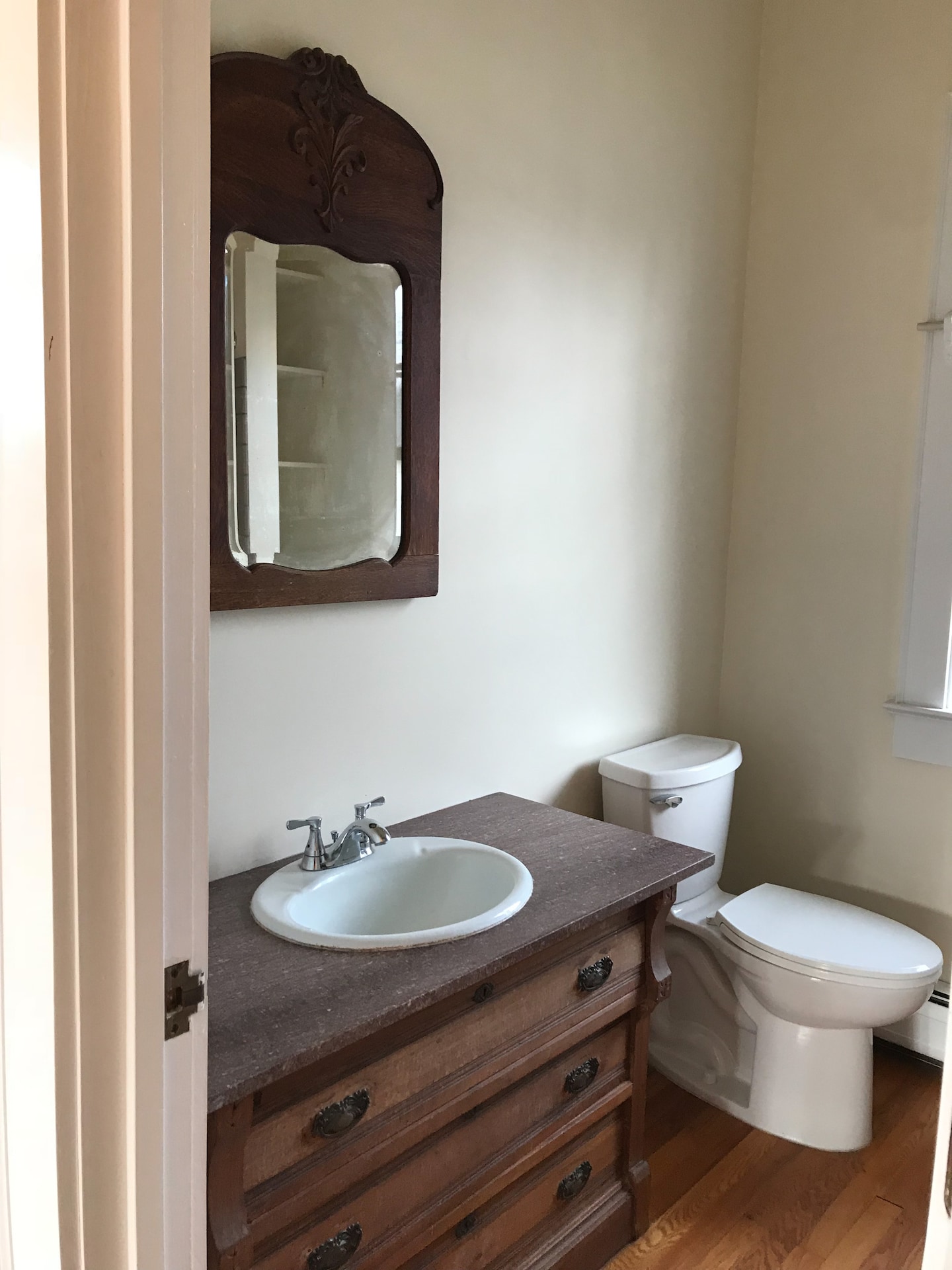
“I’ve always been drawn to houses with great bones, and this was just too appealing to not move forward,” Skye says.
The 1920s-era four square that the Replogles bought in December 2017 had been extensively renovated and expanded over the years. In 1983, a two-story addition doubled the home’s square footage and won a residential design award from the American Institute of Architects. But what might have been great by ’80s standards didn’t really work for a busy 21st-century family with two young daughters. And after 40 years that update was, well, ready for an update. To help with the renovation, they called on interior designers Lathem Gordon and Cate Dunning of Atlanta-based firm Gordon Dunning — the couple met Gordon at college in South Carolina and count the designer as a close friend.
Here’s how the designers brought the historic home up to date.
During the 1983 remodel, the previous owners did something almost unheard of in renovations: They made the kitchen smaller, returning it to its 1920s proportions. (It had been enlarged at an earlier date.) According to David Neumann, the architect of that renovation, the homeowners requested a compact cooking space with a separate breakfast room, so they used a few feet of the kitchen to create an eat-in area that would accommodate a table.
“The former owners took maintaining the spirit of the original kitchen very seriously, which we respect as history lovers, but that meant the kitchen was super tiny and utilitarian,” Dunning says.
“It’s funny because if you read design articles since the pandemic, they’ll say that people want to return to having more separate spaces, but this was a whole other level. It felt completely closed off,” Skye adds.
The designers removed the walls between the kitchen, breakfast room and dining room to make way for a more functional layout with better flow. “The kitchen was so tight, only one person could be working in it at a time, and they’re cooks and entertainers, so come hell or high water they were getting an island,” Gordon says.
To ensure the whole family could sit together at the island, they extended one end of the counter with a rounded edge so a fourth stool could fit. “Achieving that was a game of inches,” Gordon says.
Give period details a modern twist
The dining room came with a Shaker peg rail affixed to the perimeter of the room. While the pegs were charming, they prevented the placement of tall furniture against the wall and they didn’t work with the Replogles’ aesthetic. So they swapped one vintage detail for another. Out went the peg rail and in came floor-to-ceiling china cabinets that mimic the corner hutches often seen in older homes. By orienting the built-ins against the wall instead of on the diagonal, the designers achieved a more modern look. Updated hardware helps, too: “The cabinets have gold handles with malachite centers that resemble dogwood,” Skye says. “It’s those little touches that add so much detail and character.”
Old houses are notorious for their lack of closets, and this one was no exception. “This house didn’t prioritize storage at all,” Skye says. “The closets that existed were tiny, and the downside of taking out the walls between the kitchen, dining and breakfast rooms is that we lost a pantry.” To make up for that loss, the designers fit a pullout cupboard and wide drawers into unused space under the stairs.
“One of our big sayings is ‘leave no voids,’” Dunning says, referring to the firm’s ability to squeeze storage out of awkward niches. They took the same approach upstairs, where the previous renovation had left a large primary bedroom with a small bath and closet. Stealing square footage from the bedroom gave the couple a bigger closet and bathroom. It also allowed for the creation of built-ins, which include kennel crates for the family dogs and a cozy reading nook.
Weigh the cost of changes
“In any project, when we first start to present ideas to the clients we talk a lot about opportunity costs,” Dunning says. “Typically Lathem and I will cling to a historic item, like a window or doorknob, and we show what the cost will be if we keep it and what the cost will be if we lose it.” That value isn’t just monetary; aesthetics matter, too.
Case in point: The original kitchen featured a window over the sink that looks onto a neighborhood park with a popular sledding hill. When the Replogles expanded the kitchen, the sink moved to the former breakfast area and the only logical place for the range to go was in front of the window. Moving the window would have been costly, and they would have lost the view, so the team decided to keep it and place the stove in front of it — an unusual move that turned out to be one of the family’s favorite features. “Having that window by the stove allows them to look out and see the kids when they’re making hot chocolate,” Dunning says. An added benefit: As backsplashes go, a window is a pretty easy surface to wipe clean.
Bring in a personal touch
While alterations done to a house over the years reflect the desires of former inhabitants, a home’s interiors should reflect the people who live there today. “They’re southerners who love color and who leaned into the idea of a home that felt layered and collected over time,” Gordon says. “Beige was just not going to cut it.” To that end, the designers employed a bold jewel-tone palette, accented with bright florals and an abundance of antique Heriz rugs sprinkled throughout the home.
“One of the things Lathem and Cate do so well is make sure a home tells the story of the people in it,” Skye says. For example, the primary suite’s playful wallpaper featuring rhinoceros heads is a nod to the couple’s love of travel and whimsy.
“They definitely have a quirky and fun vibe as a family,” Gordon says. “We didn’t want any part of this home to feel too precious.”
Michelle Brunner is a writer in D.C. who covers interior design and culture.






